400 billion reasons why Elite: Dangerous is secretly Xbox One's most exciting game
The ship groans like a whale having a heart attack. Somewhere, deep underneath the pilot’s well-rounded buttocks, bulkheads are giving way and tensile cables are fraying apart. I glance down at my in-ship hands, sitting calm, steady and pressure-suited on the controls. Soon, there’s a cork-popping noise, followed by a building rattling and cracking.
As fracture lines spread across the ship’s diamond-hard canopy, the implacable Siri-like voice of the ship’s computer intones your worries. “Hull integrity compromised,” she says. “Pressure warning.” There’s a moment of stillness and calm. The debris of our defeated enemy hangs in front of a distant blue planet like dust motes in sunbeams. I muse that, unless we get to a station soon, we won’t outlive him by more than, ooh, ten minutes. Then the glass blows twinkling out into the void, taking the atmosphere with it, and all noise dies…
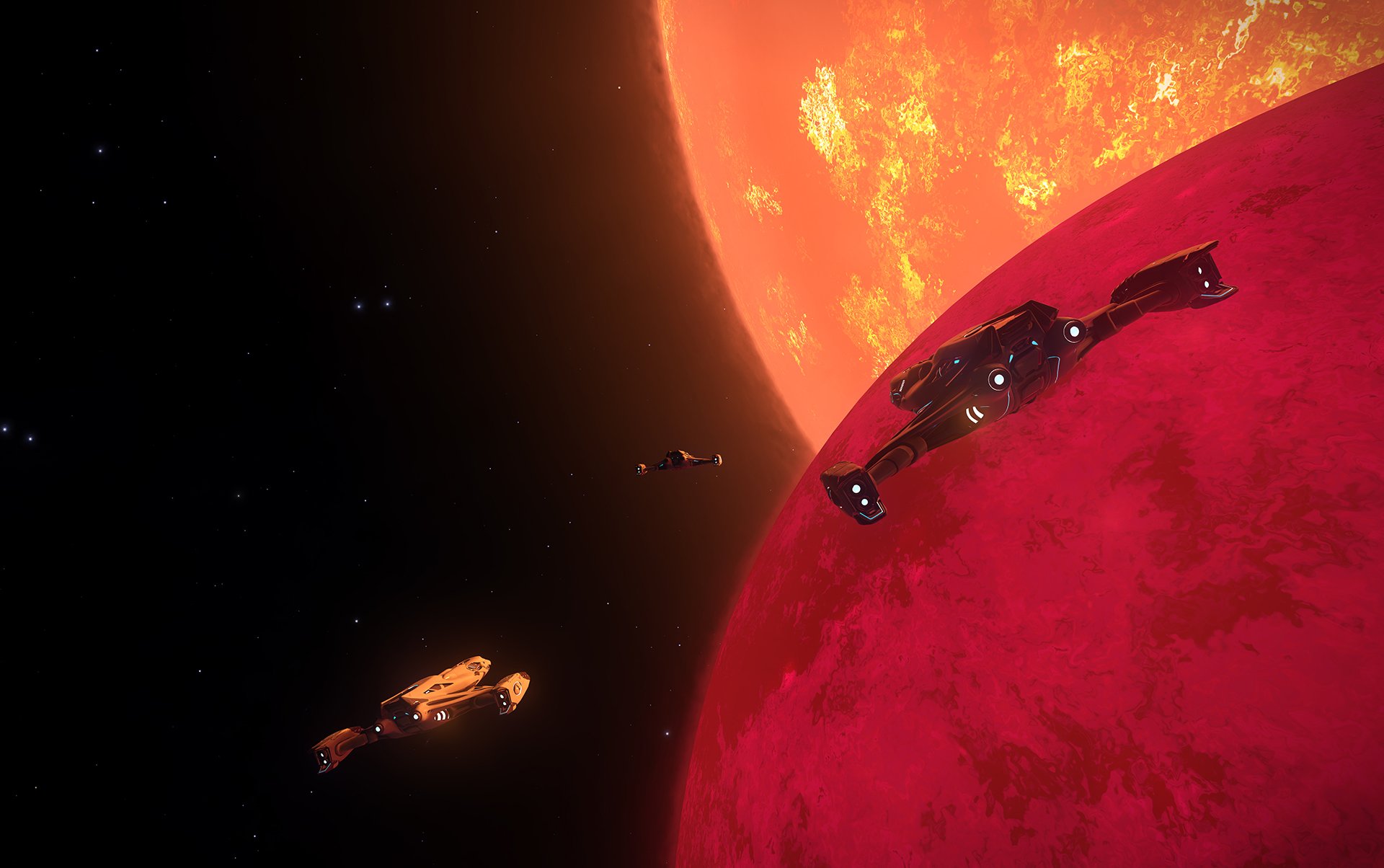
Many of you won’t have heard of the original Elite – that’s fair enough, considering it was released over 30 years ago. It was a groundbreaking space-trading sim, created in 1984 for the BBC Micro and Acorn Electron. Why was it so important? Well, Gary Penn, one of the creators of Grand Theft Auto, has said that the original GTA was “basically Elite in a city”, with the trading elements removed. That’s why we’re so excited that Elite: Dangerous is coming to Xbox One; it’s like the cloning of a mammoth, except a cool, up-to-date mammoth that can use a mobile phone and has heard of Katy Perry. And it’s literally something that no console has ever managed before.
Of course, this long-overdue sequel has more heritage than just Elite. Since Elite was first released, we’ve seen the death of much of the ambitious bits of Earth’s space programme. No more Moon landings or space shuttles. Elite launched closer to the first Moon landing than to today – the developer still had that Carl Sagan sheen, that sense that mankind’s destiny is out among the stars. Today’s astronauts are mere repairmen tinkering with mobile-phone transceivers, barely out of the planet’s atmosphere.
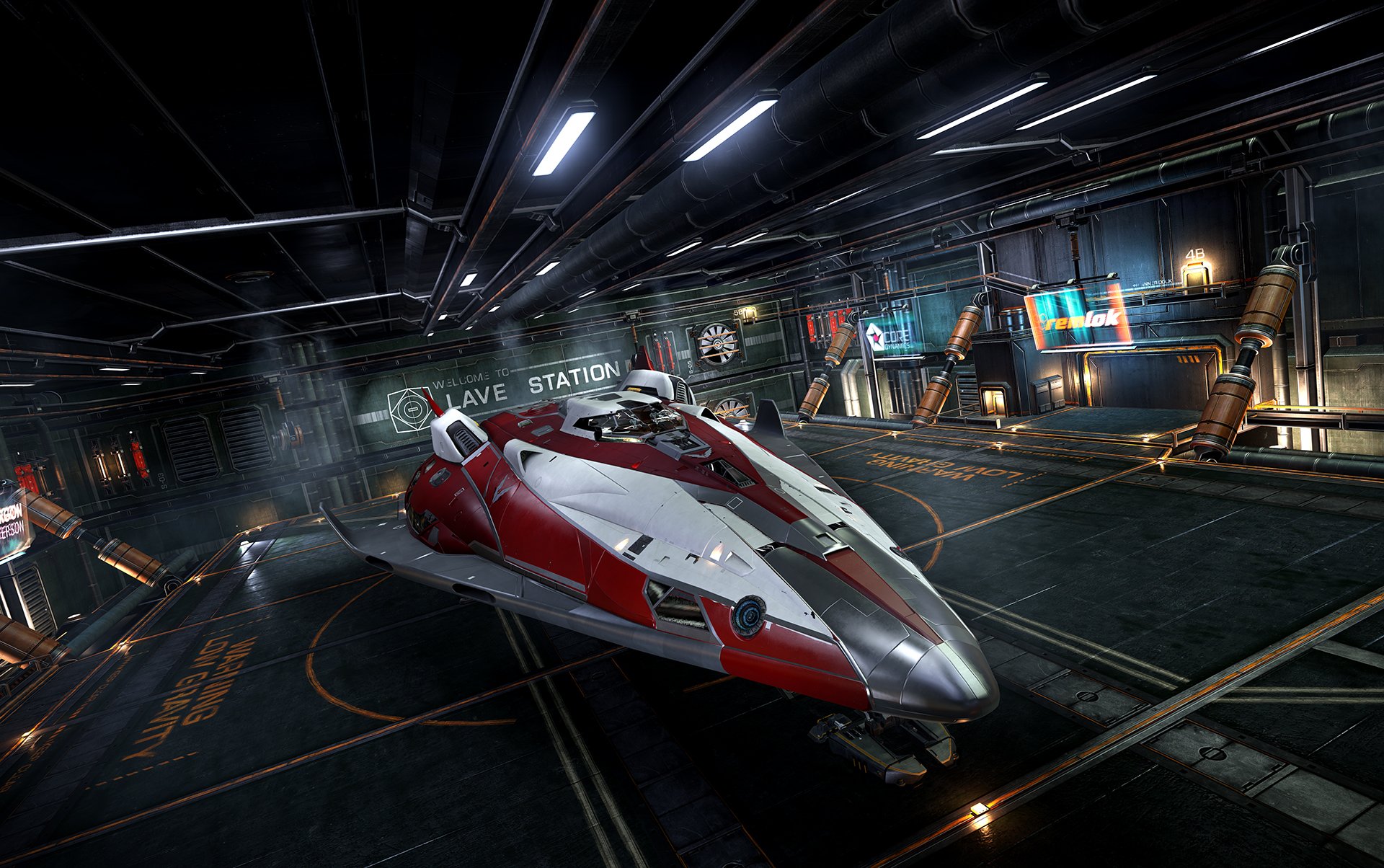
So Elite: Dangerous is unique because it shares that early dream of space, which it draws from one of the original’s two creators, David Braben. His enthusiasm for space science is clearly undimmed. I’ve been playing Elite: Dangerous on PC on and off since it was successfully kickstarted back in January 2013, and today I’ve come down to Cambridge to see Braben and hear about the new Xbox One version.
Of course, much has changed since 1984. Elite was literally phosphorescent white wireframes, representing your hardy ship as you attempted to trade between procedurally generated star systems. Your imagination filled almost everything in. Its 1993 sequel Frontier: Elite II (which Braben’s studio is named after), added in colours, realistic physics and planetary landings. 1995’s sequel, Frontier: First Encounters added in a plot, aliens and FMV. And then for 20 years, it went quiet.
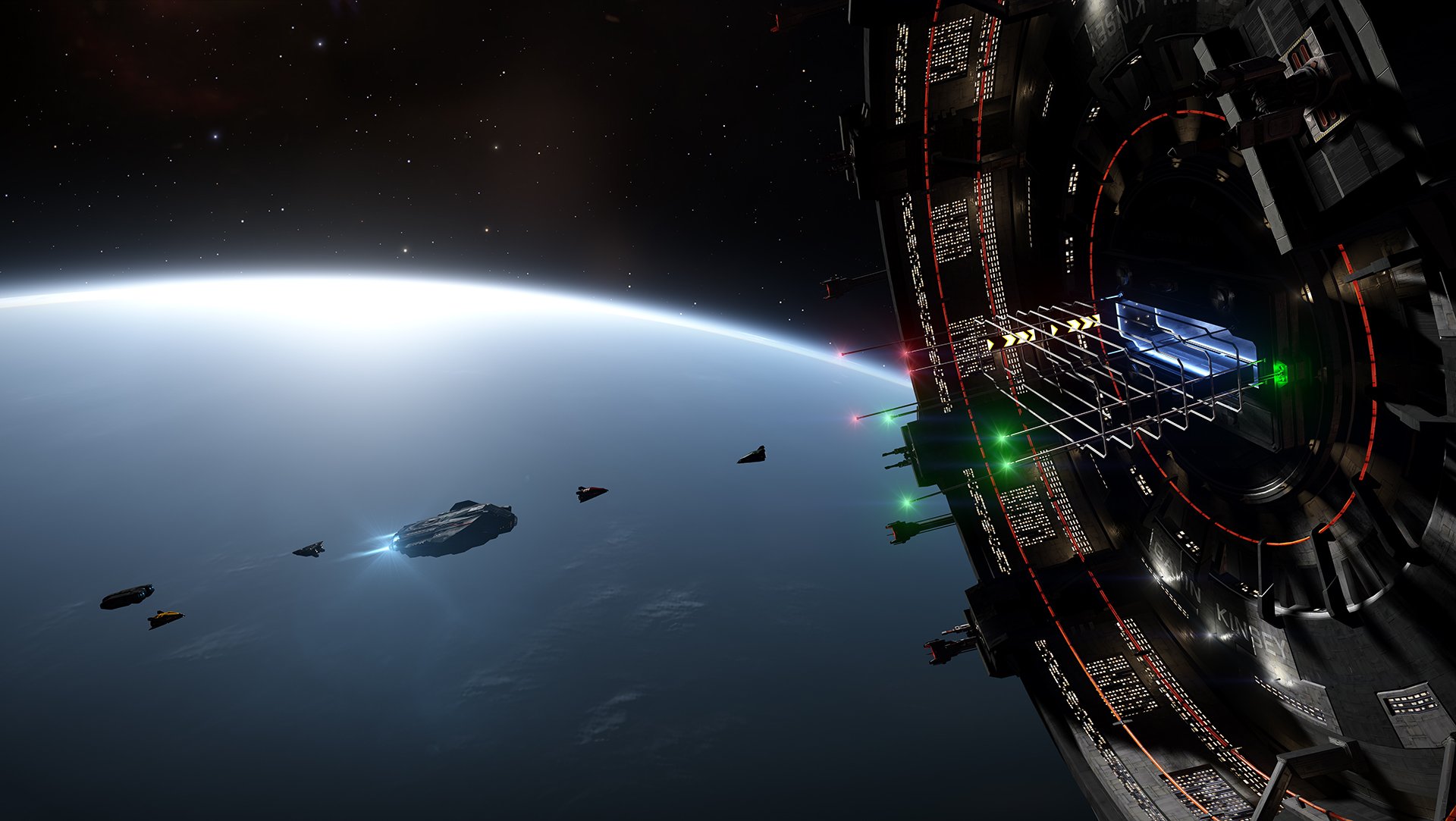
Dangerous has added a lot more than that. For one example, there are 400 billion star systems to explore, including every real object that humanity has identified in the sky. Every object that we know about has everything we know about it modelled accurately, then remodelled to fit with Elite’s setting of the year 3301AD.
Sign up to the GamesRadar+ Newsletter
Weekly digests, tales from the communities you love, and more
Want to visit the central star of Orion’s belt? You can try. It’s called Epsilon Orionis, AKA Alnilam, and looking at it on the mind-boggling galactic map, it’s way below the galaxy’s spiral arm, isolated from other stars. You’ll need a pretty special ship to make that jump, but we’re sure someone will get there. Similarly, PC players worked out the trajectory of the Voyager space probe, identified where it should have been by 3301AD, then flew there – and there it was.
The key takeaway from this is that Braben’s game has the systems in place that mean not only can you go to that star and that it’s as near to reality as possible, but that getting there is a deliciously videogame-y challenge. You’ll have to think about fuel, hostile craft, black holes, and get used to skimming the surface of stars for hydrogen fuel – which is terrifying if you don’t know what you’re doing. “It’s a very dark universe, a very cold and dangerous place,” explains executive producer Michael Brookes. “Players spend most of their time on the fringes, like the American Wild West, where a gold rush is going on. Typical grungy sci-fi.”
For this is, mostly, a hard science universe, as art director Chris Gregory explains: “Obviously, if you’re interested in science, you’re going to find lots to talk about – you’re going to find nebulae that are actually in the real world; you’re going to find planets that are actually there. Sol is modelled fairly realistically; you can find Earth, even. If you’re not necessarily science-minded and you’re in it more for the cool ships and the action, then what it does is just provide you with an amazing space to play that game in.”
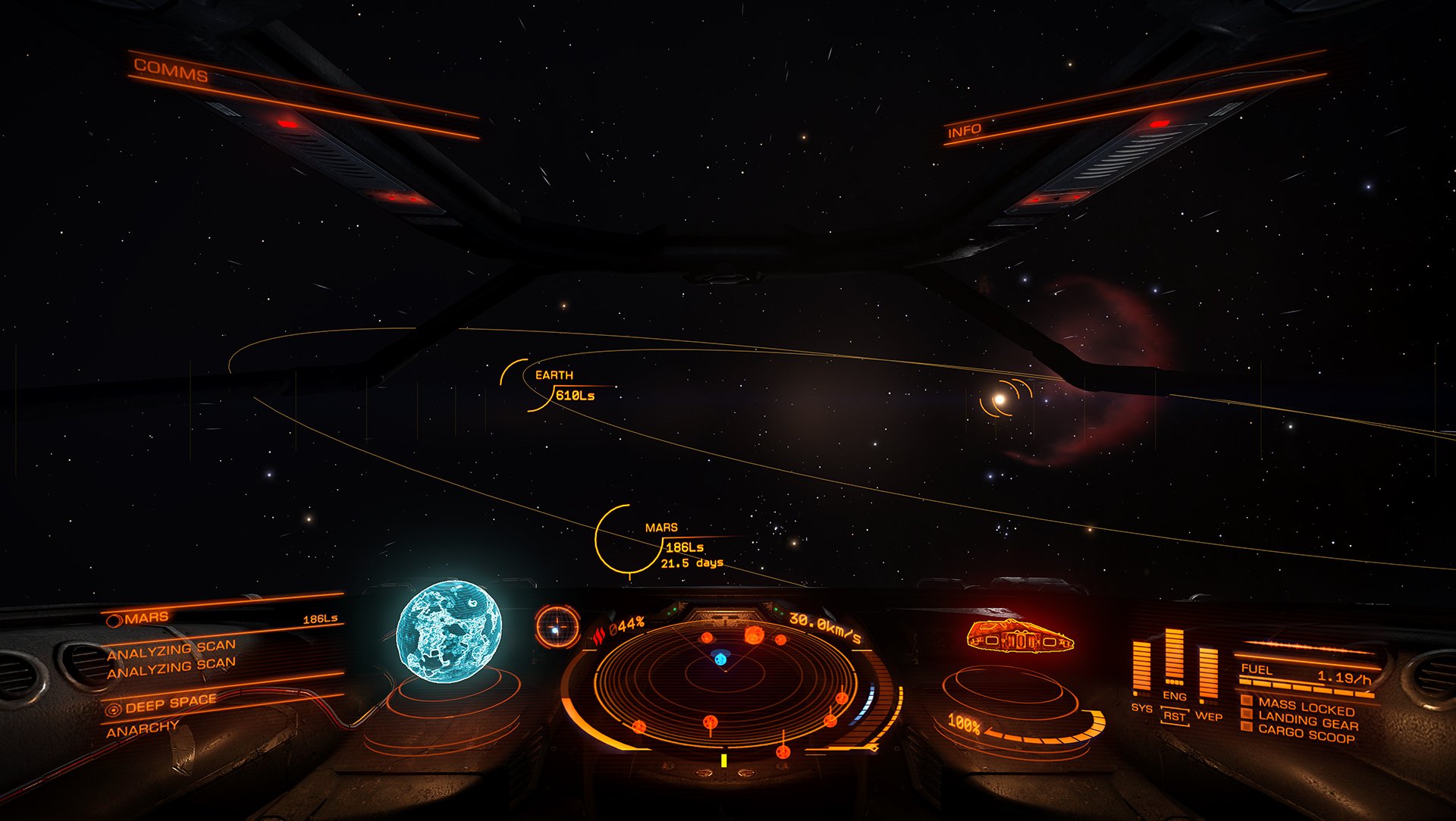
I said earlier that Elite was a space-trading game. Well, that’s a fair description of Elite: Dangerous, too, albeit with all the complexity of a modern multiplayer game. Like Destiny or Dark Souls, other players inhabit the same universe; leave open play mode on, and you’ll pass them regularly. If you want, you can explore in solo mode, but the real enjoyment comes from doing so alongside other living pilots – or going out in the asteroids and mining them for rare minerals – or carrying (or smuggling) precious cargo between distant systems – or, of course, shooting those traders down and taking their stuff.
“We’re trying to have it like real life – I don’t have to go and risk my neck; I choose what my thresholds are,” says Laurence Oldham, executive head of design. “It’s about letting the players understand that geography of options, build their own choices and narrative.” Simply put, space exploration is the purest role. To go exploring, you want something like an Asp or an Adder – two ships with long jump ranges and good weapon loadouts. Us humans have only spotted something like 140,000 objects from Earth, but Elite’s galaxy has 400 billion stars in it. So you can go out into the universe and focus on exploring these. Perhaps one day you’ll find sentient life…
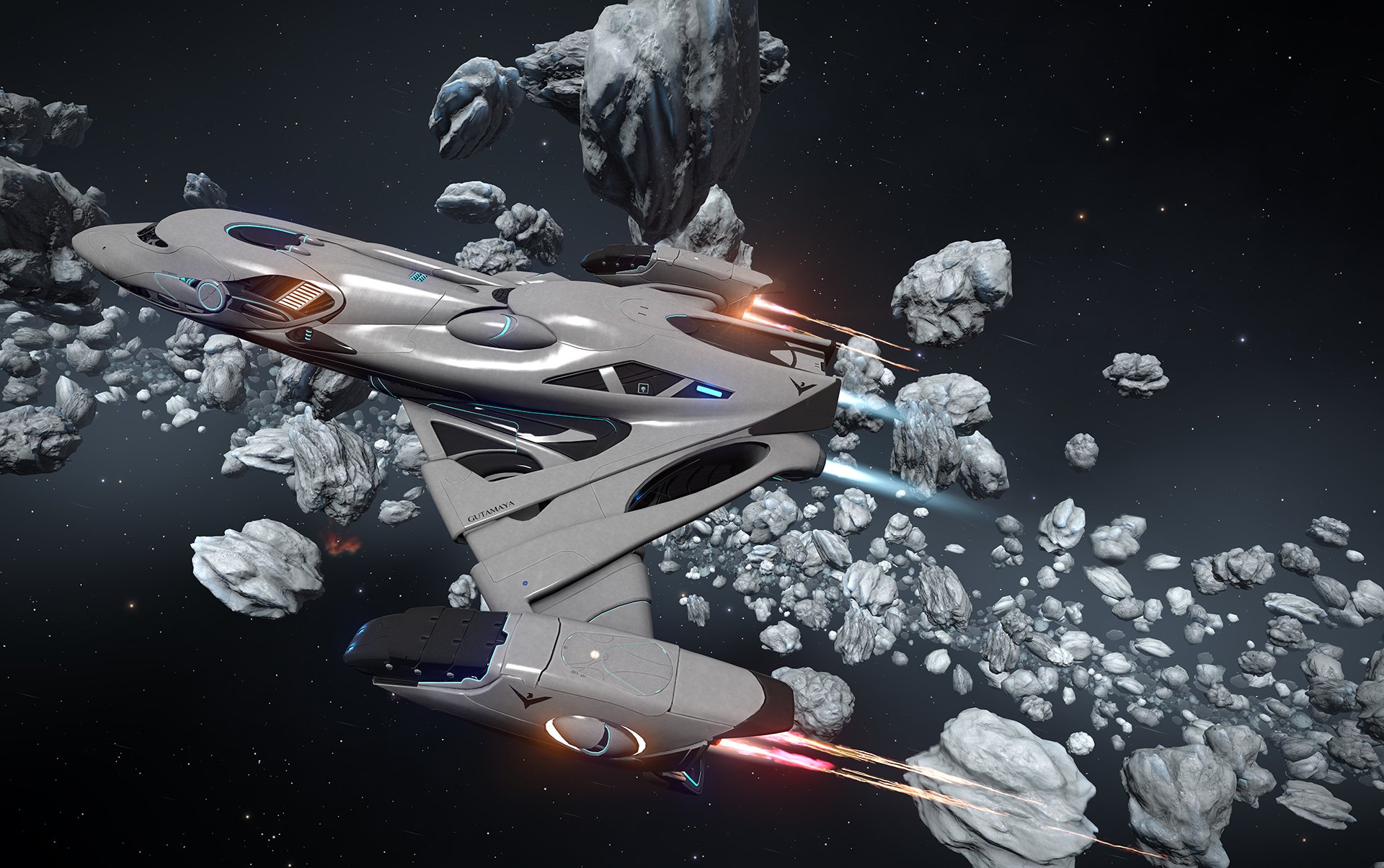
These unknown systems are generated by an intelligent piece of tech called the Stellar Forge, as Gregory explains. “It generates a simulation of the entire galaxy based, as far as it can, on NASA data and a whole load of thinking by a whole load of very clever people to make a convincing simulation of the known areas of the galaxy and then extrapolating from that for the rest of it,” he says. “What that then needs is some form of visualisation, which is what we had to do.
“So if it’s telling us that in this area of space, because of the gravitational pull, or because of the orbit from the Sun, that this planet is going to be icy, then we need to make sure that there’s an icy planet that can swap in there that’s going to suit it… It was a little bit of a wrench to relinquish control in terms of the art direction and the art style of that, and to trust that the Stellar Forge and the renderer would spit out convincingly pleasing and effective results.”
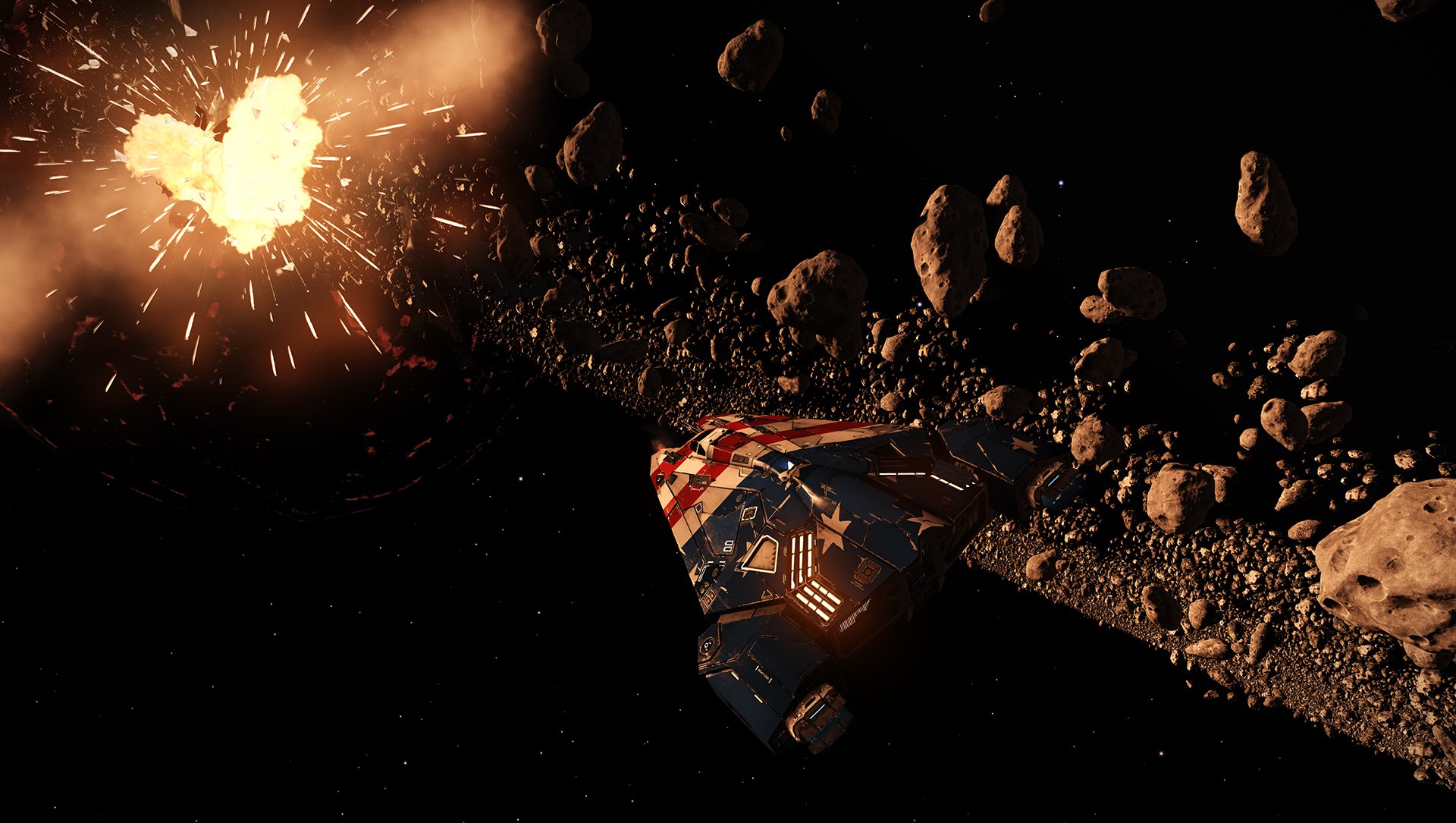
Looking out of the ruptured ship window at a gas giant, as the oxygen seeps away, I think it’s been worth it. “We went to great lengths to model things like the gas giants,” says Gregory. “These have actually got a flow map in there that will change over time. Were you to park your ship up outside there and record a time lapse, you would actually see the lines change… It is a simulation.” Similarly, the interiors of Elite’s city-sized space stations have all been carefully modelled to reflect the way that spin simulates gravity – though we can’t explore them just yet.
Travel involves using your ship’s navigation systems to plot hyperspace jumps, then charging your FTL (faster-than-light) jump engines and jumping into Supercruise speed. It’s entirely possible to fly around the entire Solar System in mere minutes. Once you’re in Supercruise, you can target another star and push the craft even harder, into Frame Shift – a handy method of hyperspace travel that folds space. It’s a fiction that sits uncomfortably amidst the hard science, but it makes galactic travel possible.
Brookes justifies the inclusion of FTL travel. “It’s what David [Braben] calls ‘The Big Lie’. We’ve got the whole galaxy in there – and as Douglas Adams said, ‘space is pretty big’. So we had to make sure players could navigate in something resembling real time. We’ve already had people who’ve visited the far side of the galaxy. But they haven’t seen everything yet; they’re running at having visited just 0.0004% of systems, and that’s without having scanned every planet.”
As long as your ship packs the right equipment, you can scan the stars and planets for data, which can then be sold back in the central systems. What you’re looking for – what everyone’s looking for – is a habitable Earth-like planet. Also, the first person to visit a system gets their name appended to it – another incentive. So players take ships like the Asp and customise them. Thankfully, every ship has a ton of different gear of different quality to buy; buying the ship itself is only a tiny proportion of the cost of outfitting it. Players strip them down, leave guns off and tear out cargo bays, just to slightly increase the jump range so they can get to more remote, unexplored systems.
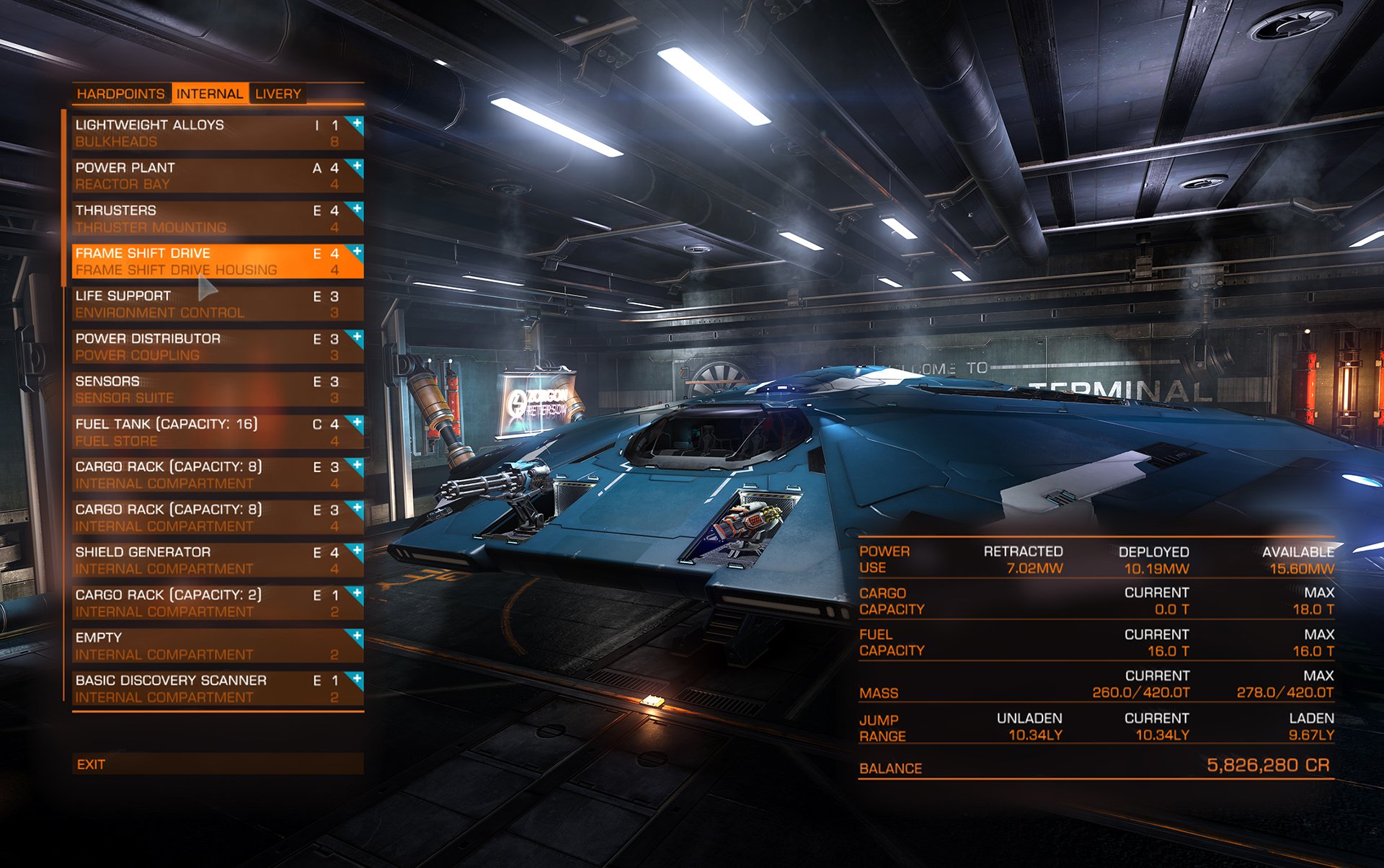
Others strip out everything but storage space and engines, as trading is another way to survive. Get yourself a Hauler and you can start to build your empire, by buying cheap in one station and selling expensively elsewhere. The game aids this by showing you (frankly terrifying) trade routes on the galaxy map, assuming you’ve purchased the most recent trading information, or by showing galactic average prices in the trading centre. In these big trading ships, you can also use mining lasers to blast apart asteroids, scoop up the floating ore and refine it on your ship. before selling it on – which is another entirely different profession.
Watch out, though, as driving one of the bigger trading ships is like painting a large target on your back. That’s why a savvy driver will cover the outside of his ship in turrets. And if you must drive a Type 9, the blue whale of Dangerous’ current ships, get a docking computer – the ships are almost exactly the size of a standardised port entrance and it takes a steady hand to land them. An alternative form of trading is smuggling. Each system and alliance has its own laws, and you can buy (or find) commodities in some that are illegal in others – toxic waste, high-end weapons and so on. Selling these on the black market can fetch you a pretty penny, if you can avoid the local police scanning your cargo.
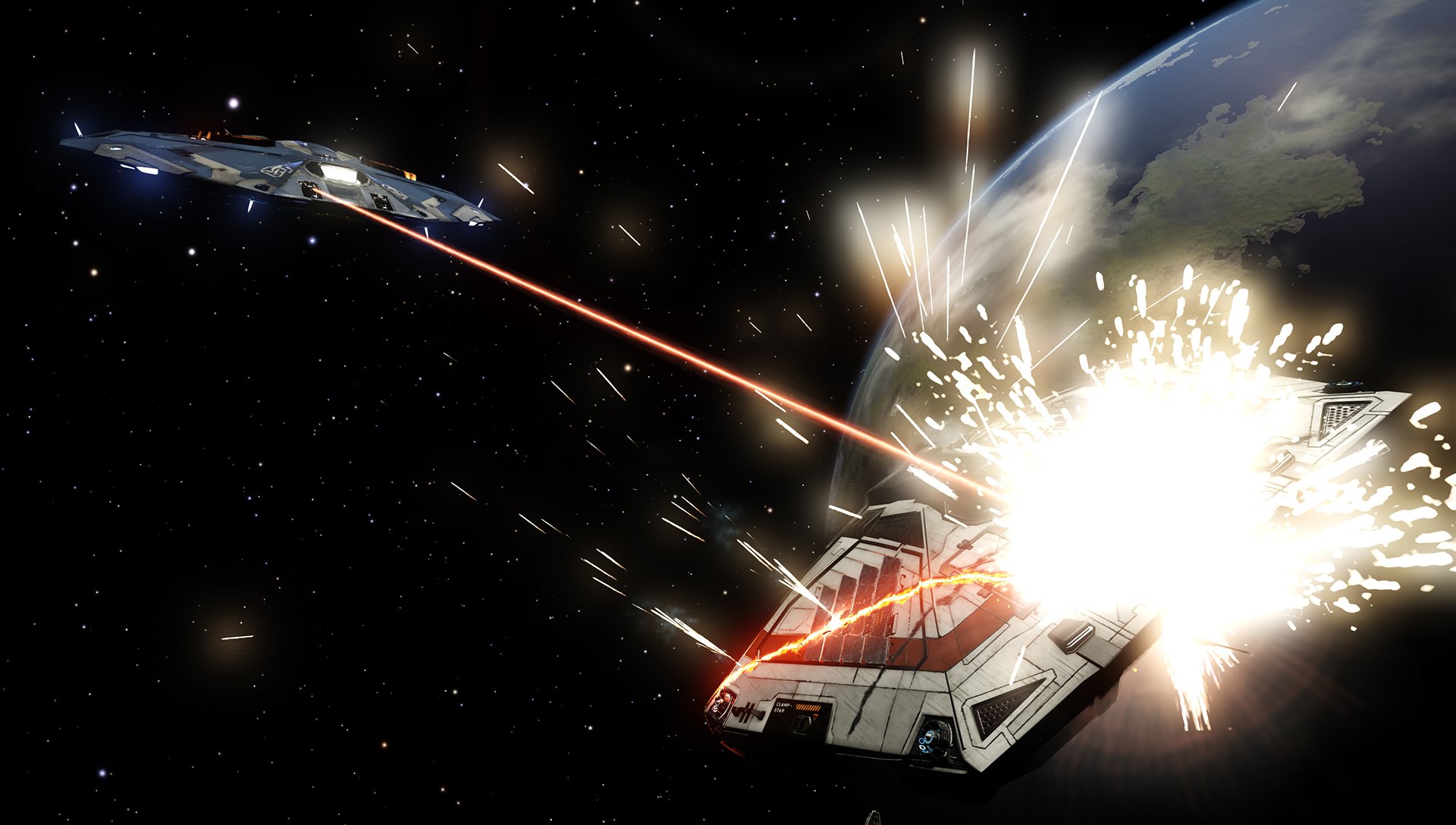
If you can’t, it plays into the heat system. Ships, when in operation, generate heat that is radiated into the void. Without that helpful radiation, all the ship’s components would break and then you’d cook to death in your cockpit. However, the hotter you are, the easier you are to scan. Same goes for the larger you are. So to sneak in under the police’s noses, you need to find a way to get cool. If you close off radiation units, the ship’s temperature will rise dangerously rapidly – but you’ll disappear from radar. Brookes has a different tactic: “You can either stealth your way in, or do what I do. Line up about 10km out from the docking hole and come in cold at maximum velocity in flight assist off mode. As long as you go fast enough, the police scans won’t have time to work.” Then you just need to brake…
And, of course, the game wouldn’t be complete without the wolves to prey on the sheep. Attacking other players is easy; you can just line up a shot on them and pull the trigger. But combat is classic zero-G dogfighting, like X-Wing vs Tie Fighter with six degrees of freedom to consider. Even the biggest ships can be taken down by smaller, more agile vessels that know what they’re doing. Get into the blind spot of a big ship and use your faster speed to stay there, and it can’t hit you – but watch out for any automated turrets. And if you can work out how to master flying with the flight assist system off, then you can perform tricks like flying backwards at full speed while firing and flipping on the spot.
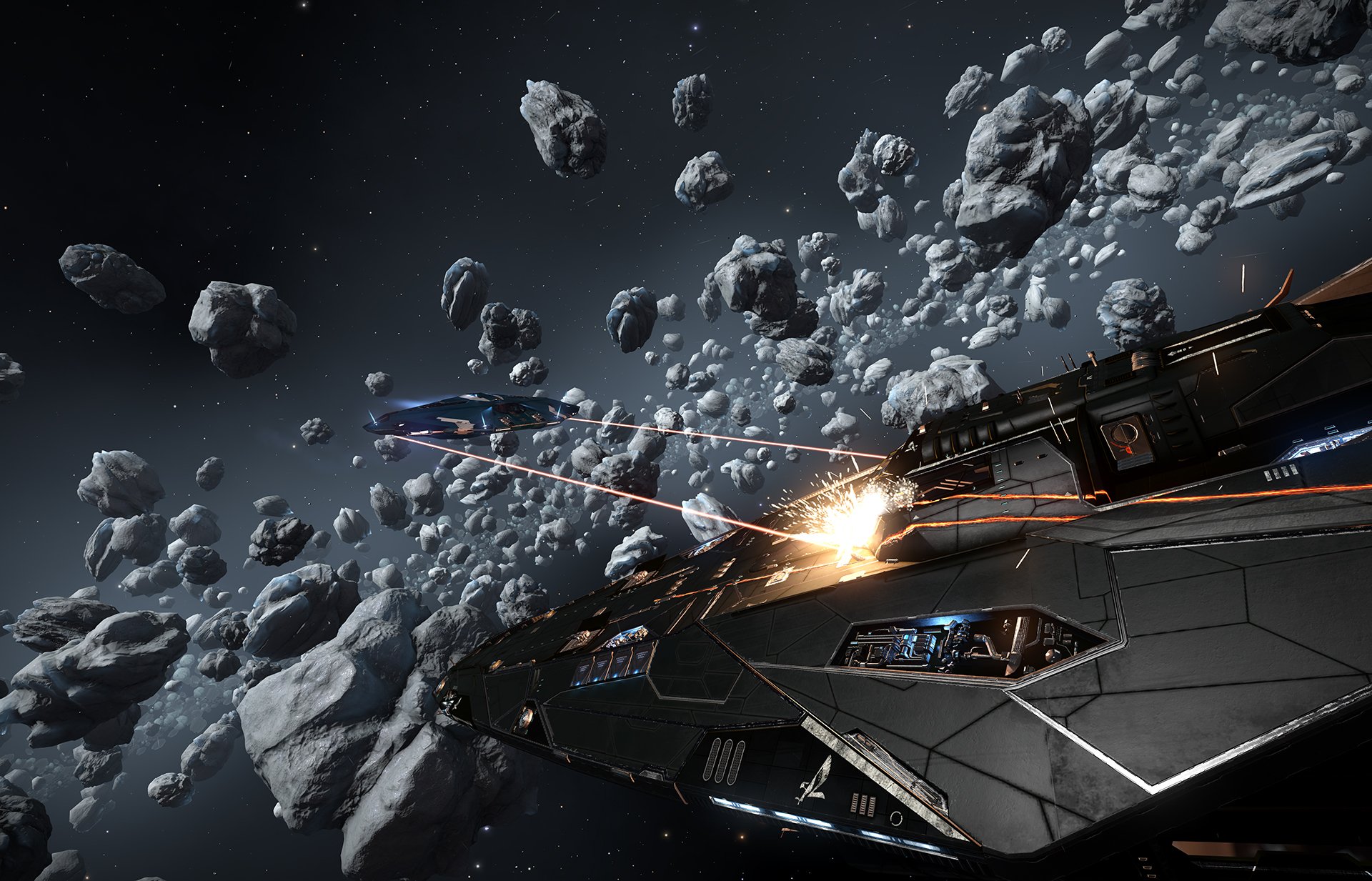
That’s not notably harder on a pad. Indeed, almost everyone I saw around the office was playing with a Xbox pad, including Brookes. “From a design perspective, the core mechanics aren’t really going to change between PC and Xbox,” he says. “I play with a pad. I couldn’t fit an X52 joystick on the desk anyway. All the commands are mapped into the controller, and it’s fully customisable.”
Let’s assume you’re not that good. Every ship has shields that will absorb a few shots, but if the damage gets through, all hell breaks loose. As your guidance systems, weapons and devices fail, you’ll lose the fight quicker and quicker. Even if you win, the damage to your ship might be so great that you’ll die before you hit the port. Losing cabin pressure doesn’t mean instant death – but it will happen eventually when your oxygen runs out.
So what happens when you die? Well, that’s a question for the ages, but in Elite: Dangerous you simply get returned to the last space station you visited, without your ship. If you have enough money in your bank account, you can get it back through insurance. Otherwise, you’ll be kicked back down to the vanilla Sidewinder, which you can always get for free.
And we’ve not even talked about the consequences of who you choose to attack or kill. If they’re an innocent trader, then the Pilots’ Federation will automatically put a bounty on your head. Every attack will make the bounty go up, and you’ll start appearing on the in-station news feeds, encouraging other players to start hunting you. Indeed, bounty hunter is a perfectly acceptable (if somewhat risky) profession. In-station bulletin boards always have jobs from one or another faction asking for so-and-so AI player to be killed, and you can scan others as you fly along. Your reputation with different factions is essential for getting access to top-end spaceships or certain systems. And this is one of the few ways of improving it.
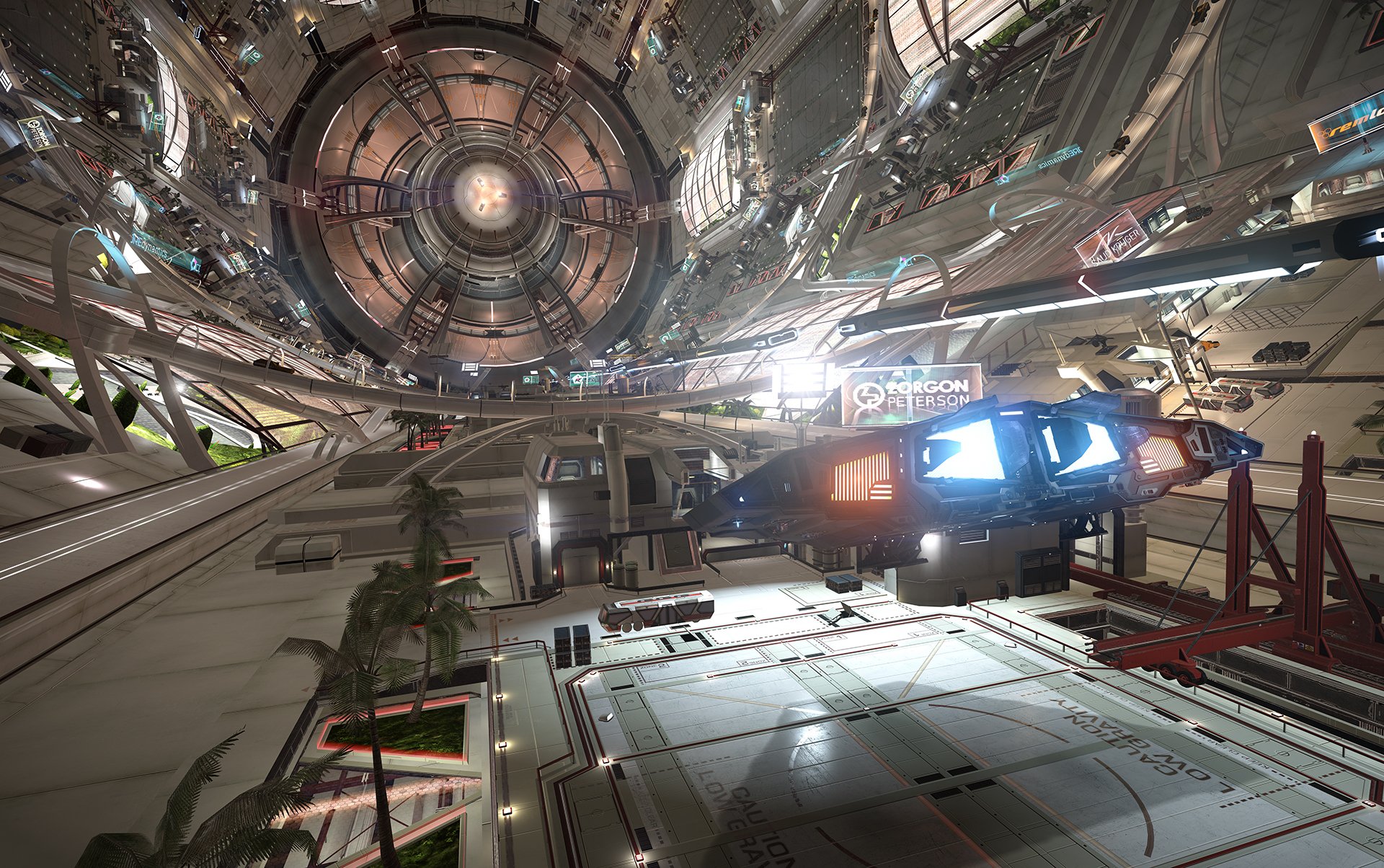
It’s not all acting as an individual, though. The game has a backstory following on from the earlier titles, which is being told subtly – through missions, the endless news feed and strange artifacts floating in space. The story is handwritten and updated every day, reflecting players’ actions and even calling out players by name.
At the moment, it’s focused on a cold war that’s slowly turning hot between the two biggest AI factions in human space – the Empire and the Federation. Despite their names, neither is particularly loveable. The Empire is much like the Roman Empire, about patronage and wars for glory and riches; the Federation is about capitalism “red in tooth and claw”. Being friendly with one while flying in the other’s territory is not a good idea.
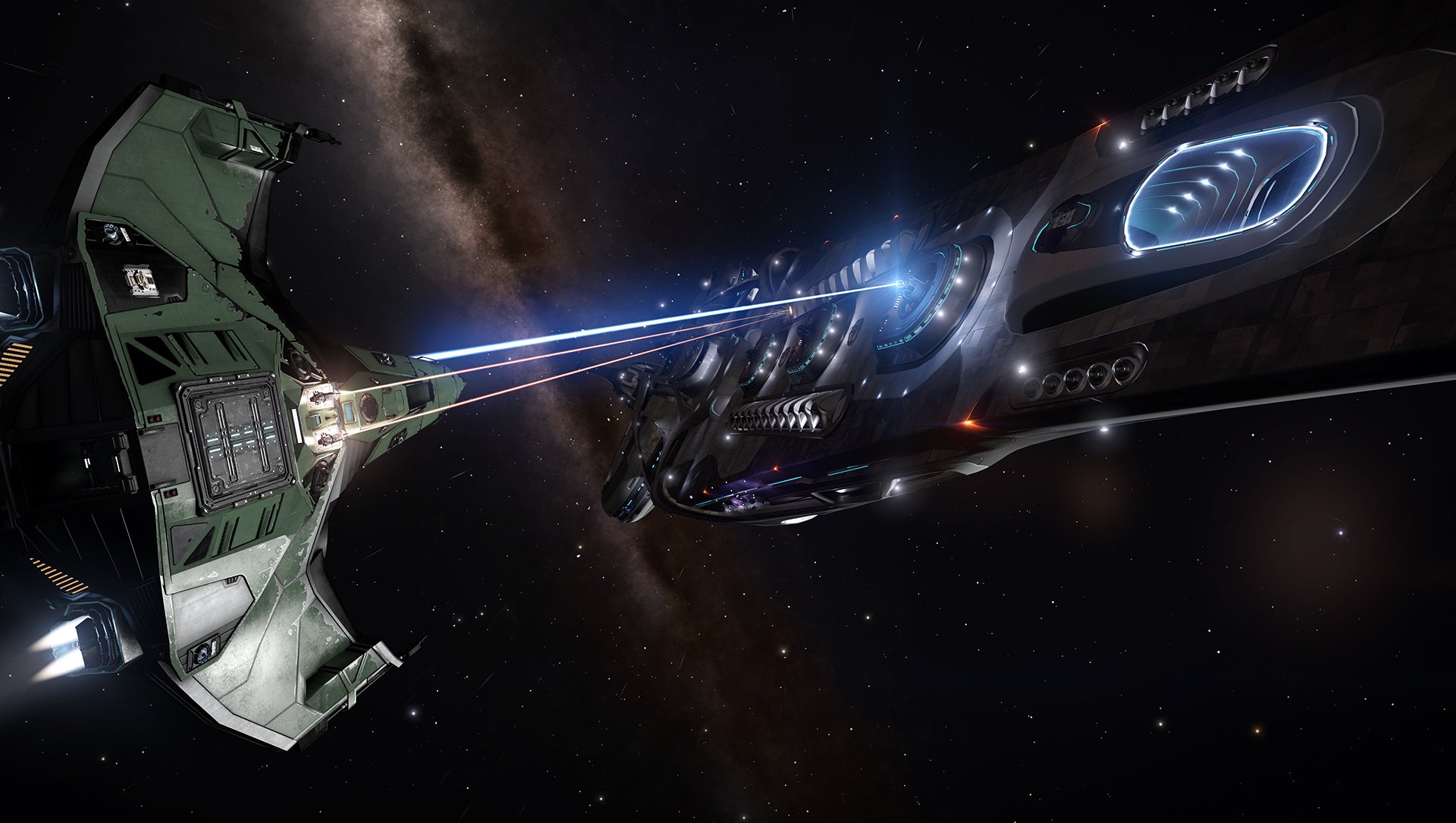
As that shifting cold war implies, you can also change the galaxy. Players can work together to choose to take particular directions. The recent updates have allowed them to build starports and capital ships, and by completing certain missions, players have driven entire systems to war. “We’ve got a living game,” says Oldham. “We’re still learning and evolving it, but there are systems and rules, and we’re trying to make them clear.”
The Xbox One version was still at an early stage when I went down to Frontier, but I glimpsed some new content coming to Xbox One at launch that will make the PC crowd jealous, even though it’s only a timed exclusive. On top of that, there are ambitious add-ons coming down the line, such as seamless space-to-atmosphere flight and landings on planets. There will be on-foot activities including FPS combat, ship boarding attempts and walking on populated planets. There will also be multiplayer crews, so you can play with your friends at Star Trek. Eat your heart out, No Man’s Sky.
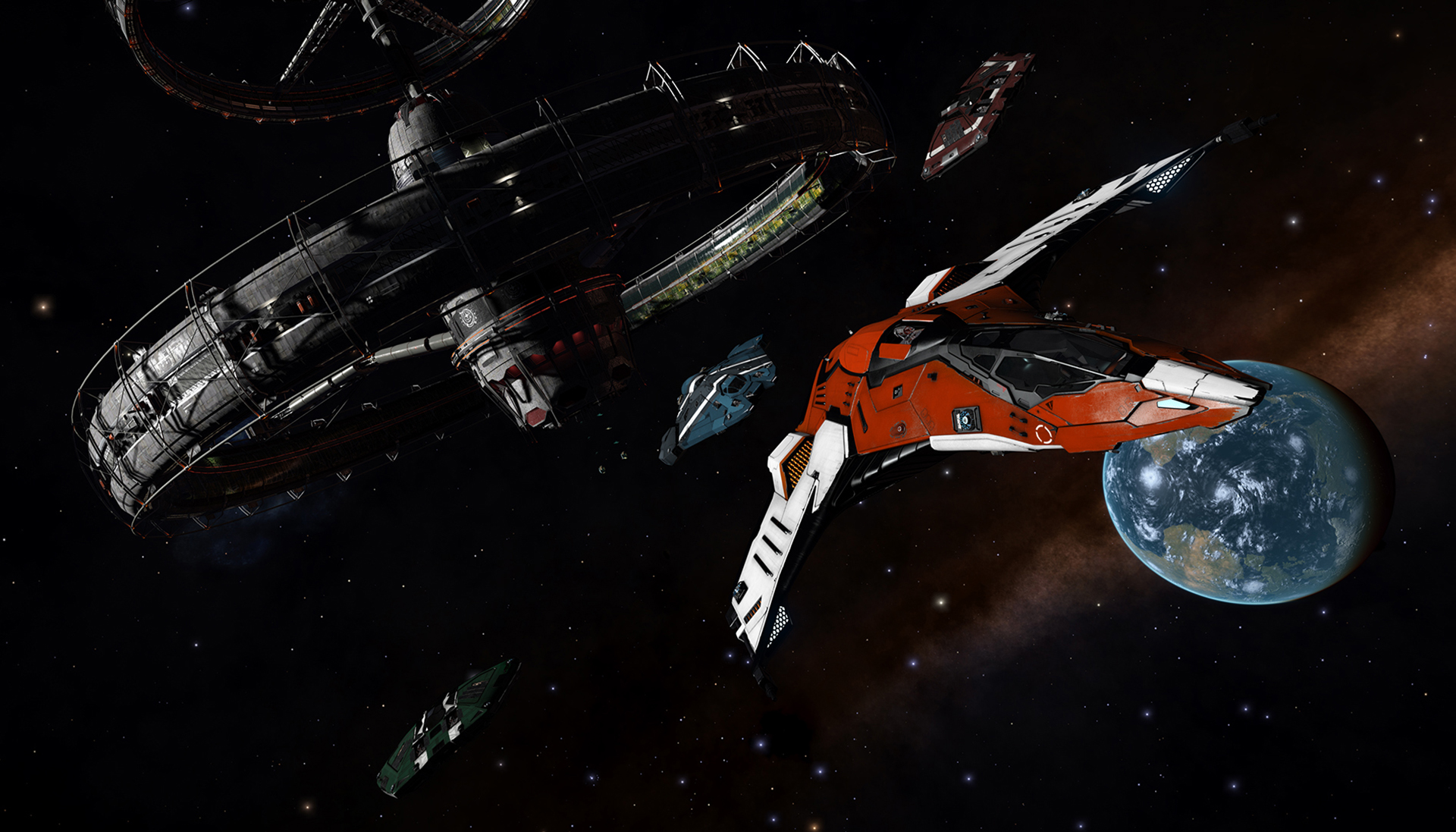
It’s been 18 months since Elite: Dangerous went into beta, which means Frontier has had all that time to polish its art, music and systems. We’re confident the Xbox One version will have the same attention lavished on it, and Brookes is reassuring. “It’s very much still a work in progress. But having come from working on a wide range of different-spec machines, we know what the Xbox One spec is. We know exactly how much memory we’ve got to play with, what the hard drive does, what the controller does. I think that gives us a lot less effort. It’s not running yet, but I’m confident it will.”
Essentially, Elite: Dangerous is a hugely complicated simulation of our universe, if faster-than-light travel existed. With a subtle long-term plot, stunning procedurally generated visuals and a totally open galaxy to explore, it’s the perfect sofa timesink. That is, if you can get your head around the real science at its heart, and want to see the Earthrise from the Moon. Me? I just want to get my ship back to a station before I run out of breath.
Click here for more excellent Official Xbox Magazine articles. Or maybe you want to take advantage of some great offers on magazine subscriptions? You can find them here.


